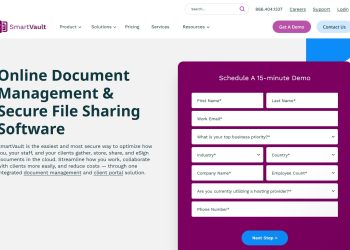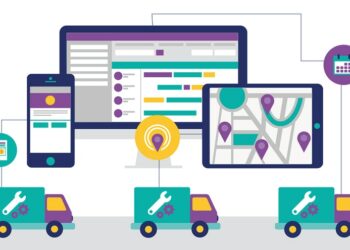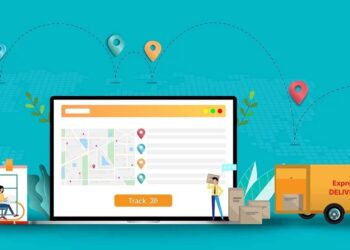If you’re researching the pros and cons of business intelligence (BI) tools to find out which would be best for your organization, you’ll never run out of reviews to read. The problem is that many of these reviews are sponsored, so you can’t count on them to give you the full story. They may be telling the truth about the strengths of a particular BI tool, but they could also be glossing over its weaknesses.
One strategy is to look for side-by-side comparisons, which should give you a better idea of how the best BI tools stack up. Qlik compared various BI tools to show the top features of each one, as well as their possible shortcomings.
Unpacking Gartner’s 2022 report
Another option is to look at reviews from an unbiased third party. Gartner, a global research firm, issued a report which evaluated this year’s top business intelligence vendors. Since it’s 42 pages long, not everyone will have the time to read it; the good news is that you don’t have to read the whole thing in order to see how the BI tools compare to each other.
If you want to find out which BI tools got the highest rating, simply find the graph that maps them out in four different quadrants. You’ll see the Leaders (the top rating), Challengers, Visionaries, and Niche Players. Out of the 20 BI tools that were analyzed this year, just three of them were placed in the “Leaders” quadrant. Evaluation criteria included company viability, market understanding, pricing, innovation, and product capabilities, among others.
General considerations when choosing a business intelligence tool
In addition to looking at specific features, it’s helpful to see the big picture. Here are a few factors to think about as you compare BI tools.
Passive data vs. active data – Data-driven decisions should be informed by real-time (active) data, not historical (passive) data. This is possible with a seamless analytics data pipeline.
Data integration – If you want data you can trust, you’ll need a BI tool with top-notch data integration. This will improve integration, communication, and automation of data loads by moving from raw data to data that’s ready for analytics.
TCO (Total Cost of Ownership) – Before committing to purchasing a BI tool, you have to look at how much it will really cost. Additional expenses could include expansion of infrastructure, integrations and deployment costs, maintenance and support costs, and more.
What are the key capabilities of a top-rated business intelligence tool?
As you compare BI tools, ask yourself two questions. First, does it have the features your organization needs? And second, does it have features that your organization will be able to use in the future? You might not need 100% of the features immediately, but the features you aren’t using now might be helpful in the future. For example, a multi-cloud storage solution could seem like overkill with your present data storage needs, but it could be a lifesaver if your company has to restructure its data storage solution in the future. With that in mind, let’s examine the main features to look for in a business intelligence tool.
Ease of Use
- A single interface allows users of any skill level to access all of the BI tool’s functionalities.
- Data literacy is essential if stakeholders are going to integrate the BI tool into their workflows without prior training. A user-friendly interface makes it easier to formulate data-driven decisions after exploring the data.
- Embedded analytics brings data and actionable analytics to the fingertips of users, exactly when and where they need them. This lets them make key discoveries and explore data without interrupting their workflows. A good BI tool will provide an extensible platform and open APIs.
Data Management
- A flexible cloud strategy gives your organization all the options it needs, no matter what data storage solution it’s currently using. With a multi-cloud architecture that lets you use anything from a cloud hybrid to on-premise storage, a BI tool should give you the ability to deploy in any environment.
- Scalability lets users uncover insights from any amount of data as efficiently as possible. Data is integrated and combined from all different sources so that users can uncover insights from up-to-date, relevant data.
- Data integration should combine, transform, and catalog data to deliver insights to every user. It should also be available to use without needing extra products or custom code.
- Governed self-service is crucial if users are going to explore data without jeopardizing data integrity. A centralized management capability should control access, sharing, and publishing through rules-based governance. Since this capability protects data quality, the insights that are derived from the data are more trustworthy.
Data Analytics
- Augmented analytics brings better insights in less time. Instead of using a black box approach, this feature uses AI to improve the human experience. This raises data literacy for users, and helps them connect with the data. Insights such as correlations or trends in the data can reach users through automatic notifications, which means they don’t have to search for these insights themselves.
- Data visualization should use AI to show the shape of the data, as well as pinpointing outliers and suggesting new visuals. By compressing data sets of any size, data visualization can aid in data preparation, association recommendations, and chart creation.
- A full mobile version of the BI tool lets users access insights and explore data on whatever device they have access to. Dashboards that are optimized for smaller screens, integrated alerting, and offline exploration will make this effortless.
- Interactive dashboards allow users to freely explore data without the limitations of query-based BI tools. This lets them uncover hidden connections that might not have been apparent otherwise.
The takeaway
Figuring out which is the best business intelligence tool is important, but you can only do that if you know what your company needs from the BI tool. You should look for the option that’s objectively the best, but also for the one that will allow your organization to thrive for many years.





